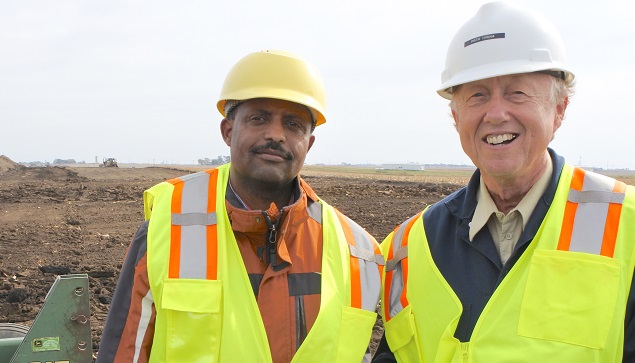A federal court denied Tuesday the latest attempt by opponents to stop construction of the Dakota Access Pipeline, which is now over 99 percent built and expected to be operational very soon.
In a 38-page opinion, U.S. District Court Judge James Boasberg offered a thorough rebuke of the tribe’s claim that the presence mere presence of the pipeline would desecrate the waters of Lake Oahe. Boasberg said the Cheyenne River Sioux Tribe’s Religious Freedom Restoration Act was unlikely to succeed because the tribe had not demonstrated a “significant burden” resulting from the easement granted by the U.S. Army Corps of Engineers.
Boasberg also noted that the Lake Oahe crossing was disclosed by the Army Corps of Engineers in October 2014, but it wasn’t until after the project was fully permitted almost fully built that the tribes raised religious concerns. In fact, the failure to raise this claim sooner in it of itself barred the issuance of a preliminary injunction according to the ruling.
“For more than two years after becoming aware of DAPL’s proposed route, construction, and operation, then, Cheyenne River remained silent as to the Black Snake prophecy and its concerns about the presence of oil in the pipeline under Lake Oahe absent any issue of rupture, as well as about the possible applicability of RFRA. … The Court, accordingly, concludes that Defendants have shown that the Tribe inexcusably delayed in voicing its RFRA objection.”
Furthermore, Boasberg said further delay of the project based on the eleventh hour argument would “impose significant costs on a private third party” and underscored that the company did make route adjustments to accommodate tribal concerns during the permitting process.
“Indeed, Defendants previously modified the pipeline workspace and route more than a hundred times in response to cultural surveys and Tribes’ concerns regarding historic and cultural resources. The Corps also imposed additional construction conditions on DAPL in response to tribal positions regarding environmental safety.”
MAIN Coalition spokesperson Craig Stevens applauded the ruling and the company’s commitment to the protection of cultural and historical resources.
“Judge Boasberg’s thoughtful decision further demonstrates that both the Army Corps of Engineers and Dakota Access have fully complied with all established laws and regulations governing the permitting, installation, and operation of the Dakota Access Pipeline,” said Stevens in a statement. “Both Dakota Access and its parent company, Energy Transfer Partners, have continued to show a strong desire to accommodate landowner concerns and respect for culturally sensitive areas.”
All parties will be back in court next month to address two motions for summary judgement filed by the Cheyenne River Sioux Tribe and the Standing Rock Sioux Tribe. However, by then, it is more than likely that construction will have been completed and the pipeline put into operation.
